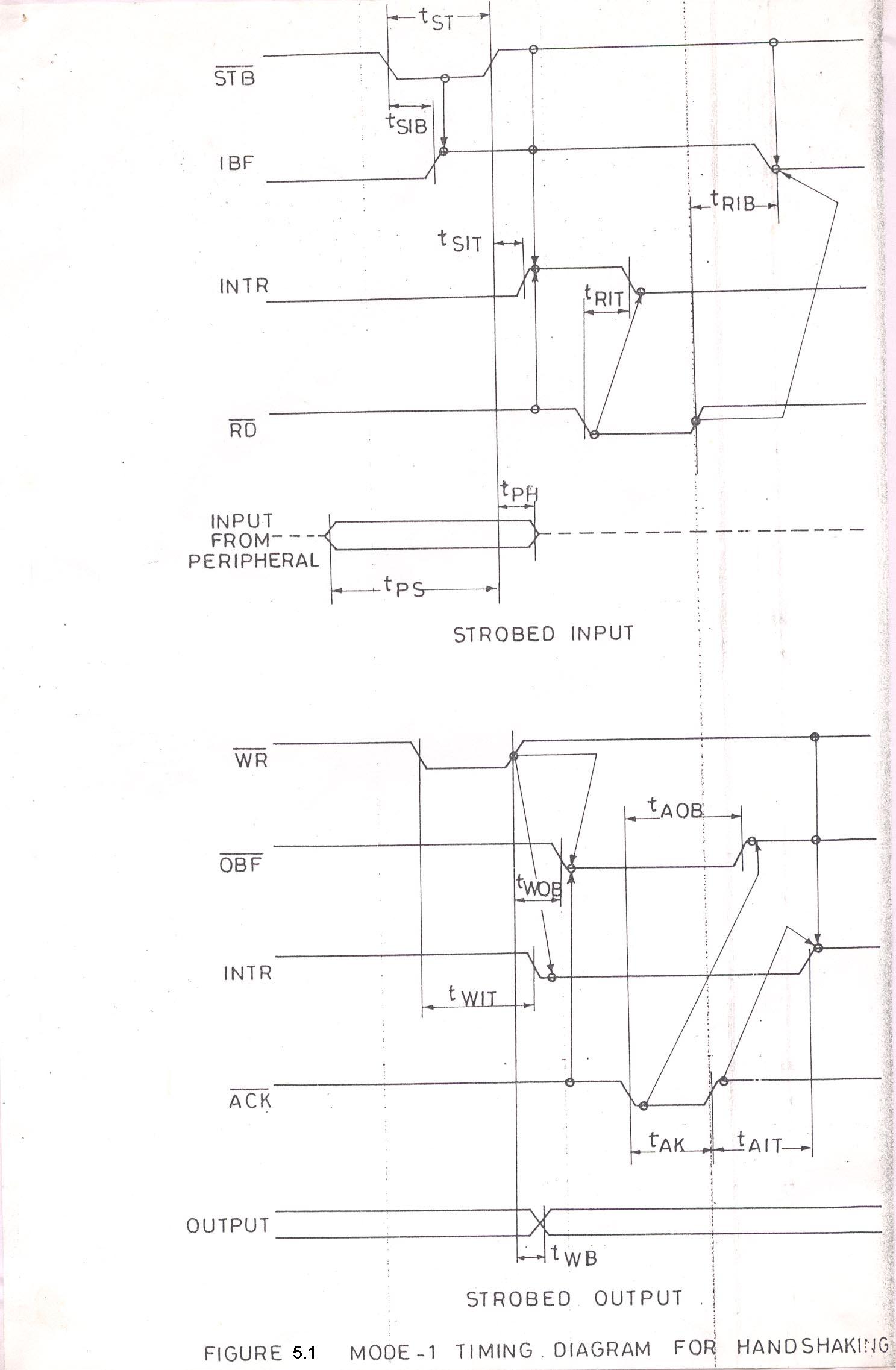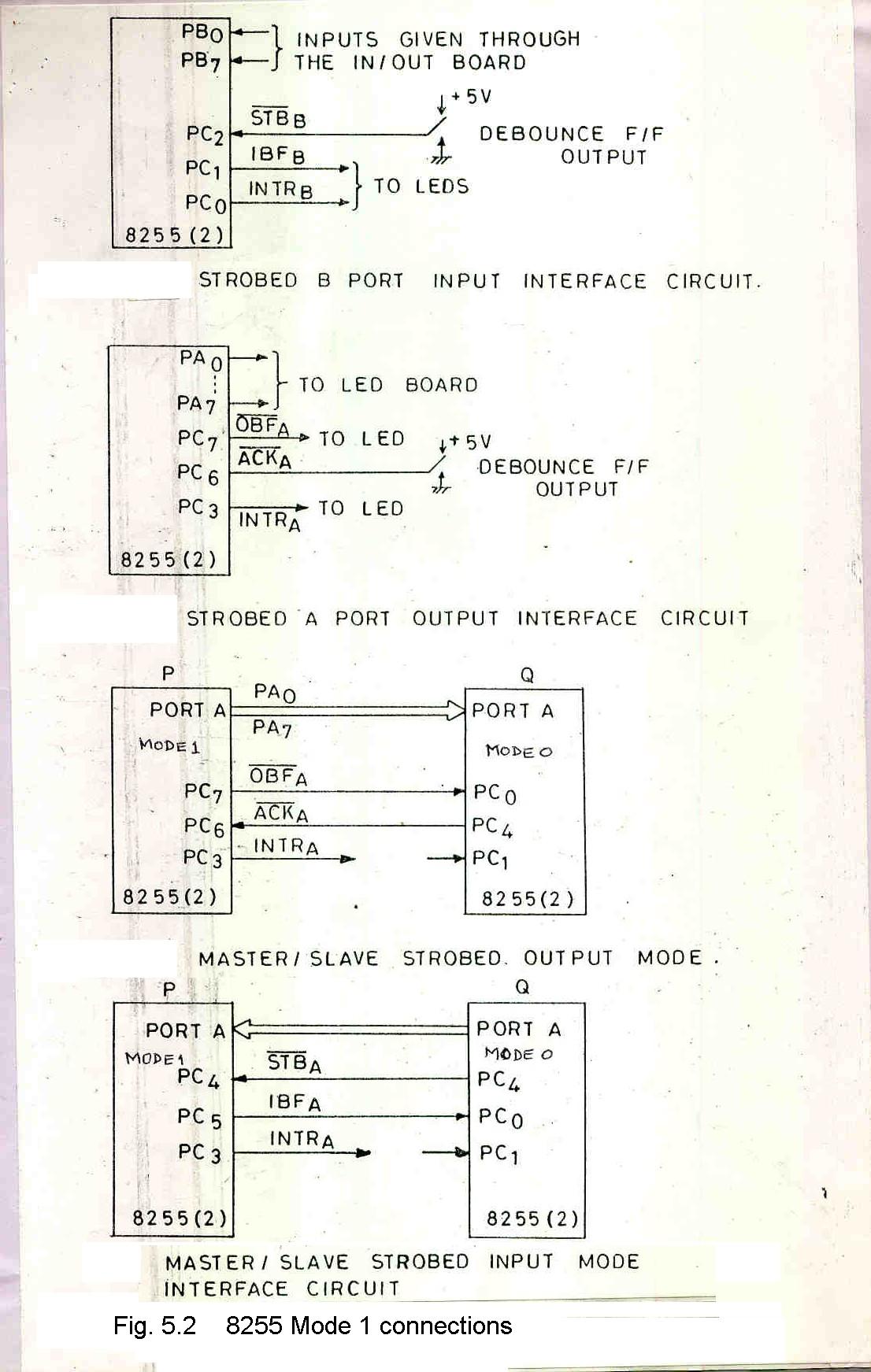H/W 1: Strobed I/O using 8255 in
Mode 1
Introduction:
In
this experiment we will be performing strobed I/O on
a parallel port using the 8255. The set-up provides de-bounced key that can be
used to send the strobe or the acknowledge signal from the peripheral.
Problems:
1. Configure port A for output in mode 1.
Write a program to sequentially output 10 bytes data
from memory in the strobed output mode. Use
polling to determine the status of the interrupts.
2. Configure port B for input in mode 1.Write a program to sequentially input 10 bytes and store them in memory.Use polling to determine the status of interrupt.
3. Assume that there are two kits with their 8255
ports connected such that Port A from one kit is connected to Port A of the other kit. We will
use the 8255 to exchange the data between the kits. One of the kits will be
operating its 8255 in Mode 0 and the other kit
in Mode 1. The handshake signals are available on Port C and the
connections will have to be made through tags. For the first part of this
experiment, the transmitter will be operating in Mode 1 and the receiver in
Mode 0. Write programs for both the transmitter and the receiver. Repeat for
transmitter in Mode 0 and receiver in Mode 1. Write a program to transfer a
block of 10h bytes from one kit to another through the 8255 ports operating in
Mode 1. You can use polling to check the status of the handshake signals (refer
Fig. 5.2).
Demonstrate
the working of all the above programs. For the STB and ACK signals, you will
need to use the de-bounced key provided with the set-up.
Pictures:

